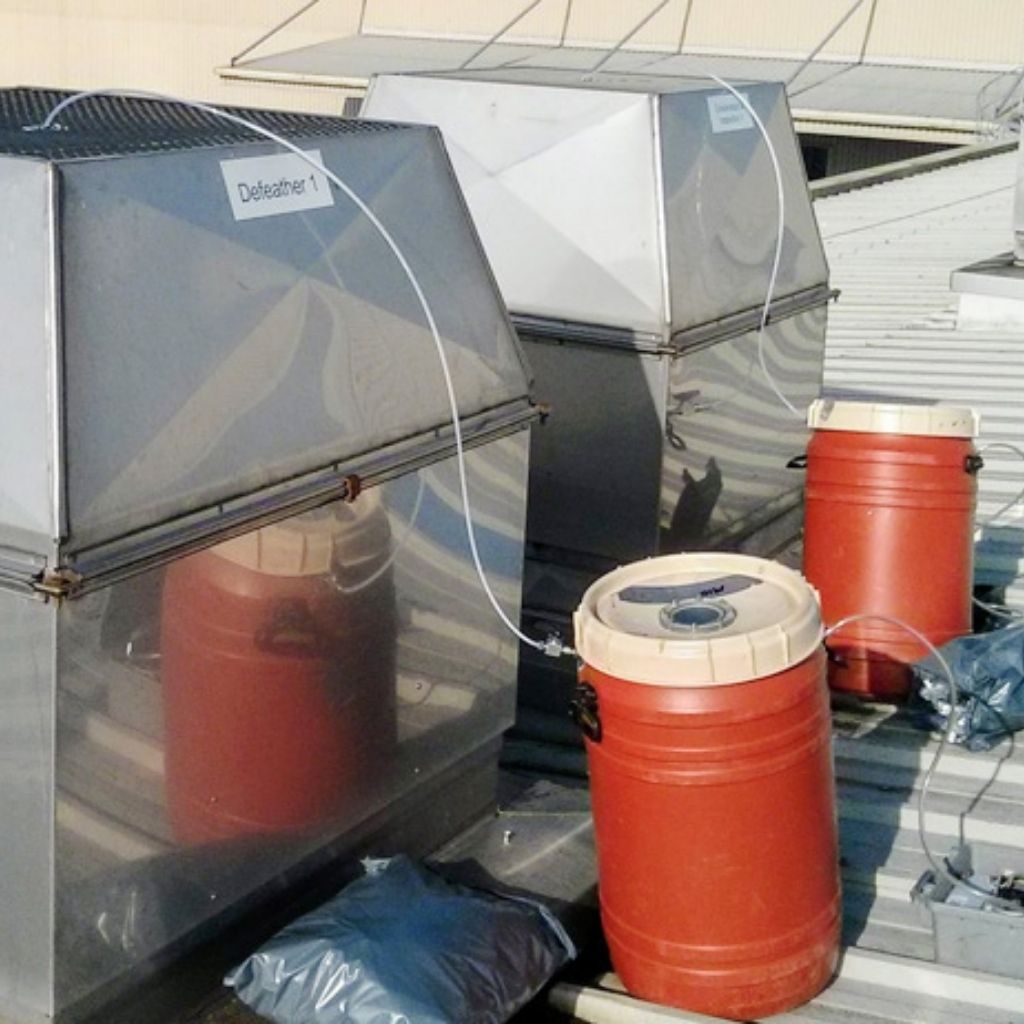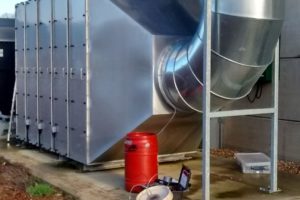HOW TO EFFECTIVELY CONTROL ODOUR EMISSIONS

[vc_row][vc_column][vc_empty_space][vc_column_text]Operators sometimes view odour control equipment as too costly. However, it is often necessary to prevent odour nuisance, comply with operating permits and minimise odour complaints. Fortunately, you can take practical measures to limit odour emissions before you resort to costly equipment. In this article, we explore effective strategies for controlling odour emissions. [/vc_column_text][vc_separator][/vc_column][/vc_row][vc_row][vc_column][vc_column_text]
1. DESIGN EFFECTIVE ODOUR CONTAINMENT SYSTEMS
[/vc_column_text][vc_column_text]
[/vc_column_text][vc_cta h2=”Possible sources of odour emissions include: “]

Flexible curtains can help contain odour emissions inside a building
- doors and windows
- accidental ventilation of buildings and storage areas
- holes in the fabric of the building
- poorly sealed buildings (old and new)
- badly located ventilation discharge points
- storage tank “breathing” vents
- uncovered vehicles leaving or entering
[/vc_cta][vc_separator][/vc_column][/vc_row][vc_row][vc_column][vc_column_text]
2. UNDERSTAND YOUR ODOUR EMISSIONS
[/vc_column_text][vc_column_text]

An odour sampling survey will provide quantitative data for use in designing your odour control equipment.
Odour Emissions Sampling
Dispersion Modelling
[/vc_column_text][vc_separator][/vc_column][/vc_row][vc_row][vc_column][vc_column_text]
3. IMPLEMENT ODOUR CONTROL MEASURES
[/vc_column_text][vc_column_text]

A tall stack can help improve an odour’s dispersion, reducing its impact.
[/vc_column_text][vc_separator][/vc_column][/vc_row][vc_row][vc_column][vc_column_text]
4. DEVELOP GOOD OPERATING AND MANAGEMENT PRACTICE
[/vc_column_text][vc_column_text]After investing in good process design and abatement equipment, support it with good operating and management practices. Back up your daily activity with an environmental management system and an odour management plan.[/vc_column_text][vc_column_text]

Odour monitoring is an important part of ongoing best practice for odour
You have gone through a rigorous process to achieve low odour emissions at this stage. You invested in great design and considered how to contain odours inside your buildings. Your odour control equipment is top-notch, thanks to the data you provided. Now you need to protect the steps you have already taken. You can do this by creating an odour management plan and establishing odour best practices across all your sites.
Allocate odour monitoring responsibility to specific members of your team. Arrange for them to have an odour sensitivity test at the Silsoe Odours UKAS-accredited odour laboratory. They can then monitor odour in line with the European odour standard BSEN13725:2022. If you subsequently receive odour complaints, you can show the regulator that you are already taking proactive steps to control odours.[/vc_column_text][vc_separator][/vc_column][/vc_row][vc_row][vc_column][vc_column_text]
TALK TO US ABOUT ODOUR EMISSIONS
[/vc_column_text][vc_column_text]Finally, if you needsupport with containing, managing or monitoring your odour emissions, please get in touch. We have a small but extremely experienced team of odour specialists and are happy to discuss your needs. Not only that, but we are experienced across various sectors. You can reach us 01525 860222 or by clicking below. You can also follow us on LinkedIn, Twitter and Facebook.[/vc_column_text][vc_btn title=”Call 01525 860222 or click here for for help managing odour emissions” color=”primary” size=”lg” align=”center” link=”url:https%3A%2F%2Fsilsoeodours.com%2Fcontact-us%2F|||” button_block=”true”][vc_separator][vc_column_text]
Updated 3rd May 2023
[/vc_column_text][/vc_column][/vc_row]


One Response
[…] the risk of your building failing to meet its air quality obligations, a proactive approach to odour control comes highly recommended. More often than not, businesses are unaware of odour leakage until it […]
Comments are closed.